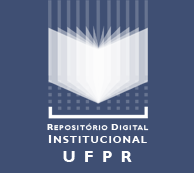Effect of partial lockdown due to Covid-19 pandemic on PM10 concentration in Belo Horizonte, Brazil
DOI:
https://doi.org/10.5380/dma.v58i0.75925Palavras-chave:
COVID-19, vehicular traffic, air pollution, PM10, lockdownResumo
Despite their proven effectiveness in combating the pandemic of COVID-19, measures of social isolation, quarantines, and lockdowns have drastic consequences in the social and economic spheres. This paper presents results from an ongoing study in Belo Horizonte, Brazil, to evaluate the effect of social isolation on MP10 concentration. The monitoring point was chosen in a wooded area within a university campus. Social isolation was analyzed in terms of vehicle movements recorded by speed cameras, during all phases following the partial lockdown (PL) instituted in the city. The social isolation index (SDI) showed a maximum isolation percentage of 49.5%, reached in the first week of the PL, with a subsequent continuous downward trend. The results showed a 65.2% reduction in PM10 due to the PL, when comparing the mean values monitored before (22.2 ± 3.0 µg m-3) and during (7.7 ± 4.2 µg m-3) the PL. The relationship between vehicle movement and PM10 concentrations in the monitoring region was evidenced and found to be significant (r(XY) = 0.782, p-value = 0.000). Such reduction, observed in such a short term, but due to force majeure, certainly has beneficial effects on the population's health, reinforcing the reflection about the positive impacts that could come with policies that favor the reduction of vehicle movement in the cities.
Downloads
Publicado
Como Citar
Edição
Seção
Licença
Os Direitos Autorais sobre trabalhos publicados nesta revista são do autor, com direitos de primeira publicação para a revista. O conteúdo dos trabalhos publicados é de inteira responsabilidade dos autores. A DMA é um periódico de acesso aberto (open access), e adota a licença Creative Commons Atribuição 4.0 Não Adaptada (CC-BY), desde janeiro de 2023. Portanto, ao serem publicados por esta Revista, os artigos são de livre uso para compartilhar (copiar e redistribuir o material em qualquer suporte ou formato para qualquer fim, mesmo que comercial) e adaptar (remixar, transformar, e criar a partir do material para qualquer fim, mesmo que comercial). É preciso dar o crédito apropriado, prover um link para a licença e indicar se mudanças foram feitas.
Os conteúdos publicados pela DMA do v. 53 de 2020 ao v. 60 de 2022 são protegidos pela licença Creative Commons Atribuição – Não Comercial – Sem Derivações 4.0 Internacional.
A DMA é uma revista de acesso aberto desde a sua criação, entretanto, do v.1 de 2000 ao v. 52 de 2019, o periódico não adotava uma licença Creative Commons e, portanto, o tipo de licença não é indicado na página inicial dos artigos.




